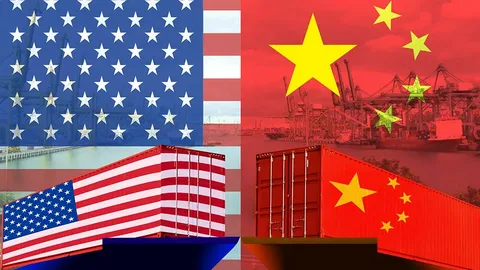US-China trade relations have a new chapter with the indication by former US President Donald Trump of a “total reset” with ongoing high-stakes talks in Geneva. The move represents the first face-to-face talks between Washington and Beijing since Trump’s administration ramped up tensions by imposing blanket new tariffs on Chinese imports. Going to Truth Social, Trump labeled the talks “very good” and emphasized they are occurring in an environment that is “friendly, but constructive.” As the two global powers talk across the table, the globe holds its breath, hoping these talks bring relieved US-China trade relations and new economic cooperation.
Read More: US-UK Trade Agreement Sparks New Era in Global Economics
Geneva Talks Begin Amid Soaring Tariffs
The trade talks, which took place at the residence of the Swiss ambassador in Geneva, come when both nations are feeling the pressure of aggressive tariff policies. The Trump administration has leveled cumulative tariffs up to 245% on some Chinese goods, prompting China to hit back with counter-tariffs up to 125% on imports from the US. The tit-for-tat measure has forced the majority of analysts to describe the scenario as a “near trade embargo” between the world’s two largest economies “US-China trade relations”.
Citigroup’s global chief economist Nathan Sheets described the scenario as a “lose-lose proposition” owing to the reality that neither economy is helped by the continued pressure. Trump doubled down on his stance, however, by suggesting that an “80% Tariff on China seems right!” —a remark that rattled some markets and sparked debate among trade analysts.
Confronted with the rhetoric, White House Press Secretary Karoline Leavitt quickly moved to specify that tariff modifications would only occur if China agreed to major concessions, suggesting the US would not go it alone.
Market Reaction and Economic Consequences
Volatility around US-China trade relations has had a stunning impact on investor sentiment, international markets, and supply chains. While Chinese exports unexpectedly increased in the last month, most of the growth is being attributed to diverted flows of trade through Southeast Asia in order to enable China to bypass some of the retaliatory US duties. Economic analysts caution, however, that even after reducing the tariffs to 70–80%, the volume of bilateral trade could drop dramatically below pre-trade war levels.
Gary Hufbauer of the Peterson Institute for International Economics noted that the damage is likely already done. “Even a 70% tariff will likely reduce trade volumes in half,” he warned. The world economy as a whole is still recovering from the shock waves, with most businesses holding back and waiting until more clarity is gained through the Geneva talks.
Also Read: Side Hustle Blueprint: 10 Ways To Hit $2,000 Monthly Fast
A Measured Approach, Not a Breakthrough
The US delegation, led by Trade Representative Jamieson Greer and Treasury Secretary Scott Bessent, put more emphasis on “de-escalation” instead of a complete trade pact. Vice Premier He Lifeng on the Chinese side also repeated similar sentiments, showing that both countries want to ease tensions but not with the promise of a quick resolution.
Trump’s recent signature of a gesture trade agreement with the UK was added to the optimism. Even though non-binding and narrow in scope, the agreement indicates a possible direction towards selective US-China trade relationslowering. It’s also considered to be a light model for upcoming such agreements, including one with China. However, policy experts are not that sure. “Talks are fine, but action matters,” said Nathan Sheets. “Words won’t cut tariffs.
Is This Truly a Reset?
Even Trump’s effusive jawboning and claims of “GREAT PROGRESS!!” have had most experts taking their enthusiasm and checking it at the door. While the fact that both nations are negotiating is a good thing, there is little to suggest that meaningful changes are on the horizon. Most fear that the talks will conclude with high-flowery language and no real reversal of US-China trade relations. For now, the global business community remains guardedly optimistic. A “complete reset” of US-China trade relations would involve not just reduced tariffs but also new trust and cooperation between two economic giants. But until policy really changes, markets and investors will continue to tread carefully.
For More Trending Business News, Follow Us 10xtimes News






